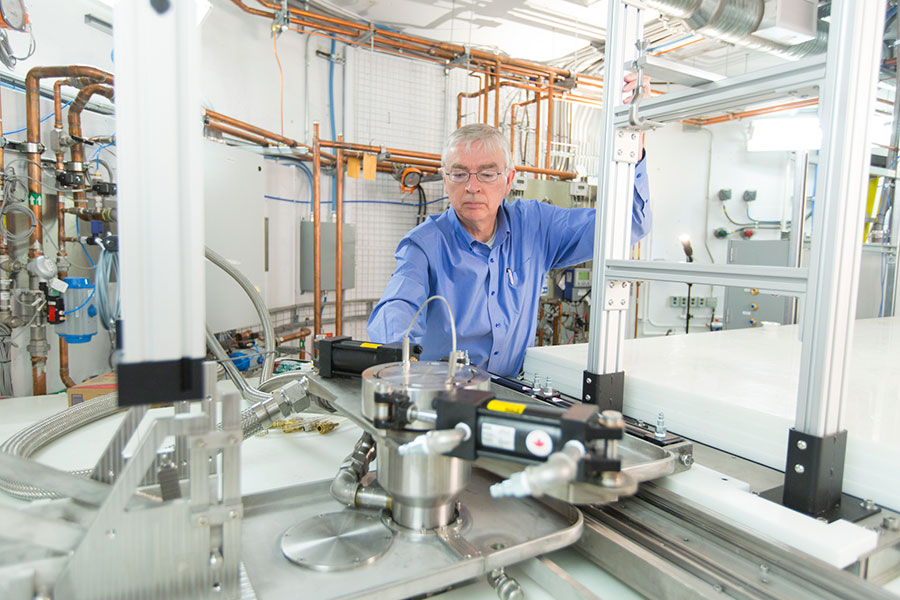Illuminating isotopes
Scientists at the Canadian Light Source (CLS) have made the first shipment of medical isotopes produced in its dedicated linear accelerator.
By University Communications The Medical Isotope Project (MIP) facility at the CLS is the first of its kind in the world, relying on powerful X-rays to produce the isotopes, unlike traditional nuclear reactor- based methods, according to a Nov. 14 media release.
The Medical Isotope Project (MIP) facility at the CLS is the first of its kind in the world, relying on powerful X-rays to produce the isotopes, unlike traditional nuclear reactor- based methods, according to a Nov. 14 media release.
The MIP uses a particle accelerator to bombard a target made of enriched molybdenum- 100 metal (Mo-100) with high-energy X-rays. The X-rays knock a neutron out of the nuclei of some of the Mo-100 atoms in the target, converting them to the isotope Mo-99. The Mo-99 decays into technetium- 99m (Tc-99m), which is used for tagging radiopharmaceuticals for medical diagnostic tests. After the Mo-99 has decayed, the remaining Mo-100 in the solution is recovered and recycled into additional targets.
The release noted that Tc-99m is by far the most used medical isotope in Canada; it is used in about 5,000 medical scans daily. Two or three accelerator systems like the MIP facility could produce enough medical isotopes to supply all of Canada.
The MIP will continue to test the production of the isotopes until approval from Health Canada is obtained. By 2016, it is expected it will be the leading supplier of isotopes to health-care facilities across Saskatchewan, Manitoba and Northwest Ontario.

